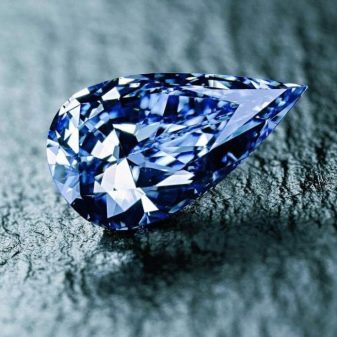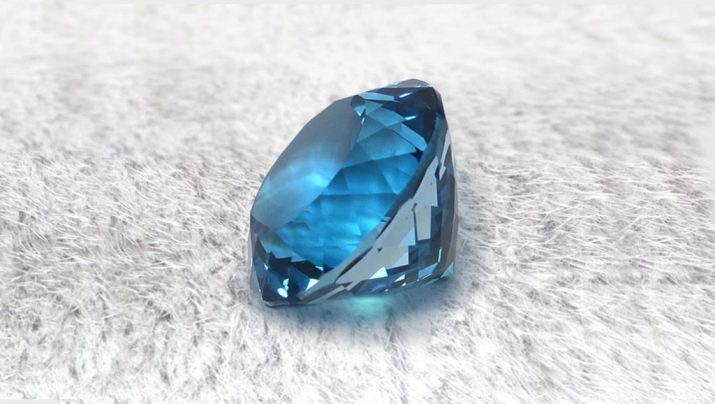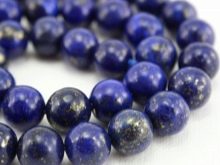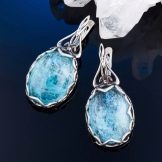Blue color is found in nature quite often - it symbolizes the sea and the sky, has attractiveness and depth. It is not surprising that since ancient times people have tried to acquire talismans and charms with minerals of this shade. Blue stones are highly valued by jewelers and representatives of the craft class, creating a variety of crafts and interior items from natural raw materials. But in order to choose your right mascot, you should first study the names and descriptions of precious and ornamental stones in dark blue and light blue.

Species and their properties
There are many minerals, crystals, rocks of blue, turquoise, bright blue. Some of them are used in jewelry - for the manufacture of jewelry and products of varying complexity. Such substances as titanium, boron, iron, cobalt are responsible for the azure color scheme in nature. All stones are divided into 3 main categories - precious, ornamental, semiprecious. Each of them has its own characteristics and colors - from dark blue to transparent sky blue or aquamarine, with an admixture of greenery.
There are well-known varieties of indigo stones. For example, dark blue corundum, better known as sapphire, or turquoise is a gem of natural origin, especially valued in the East. More rare options include larimar or African tanzanite mined in the Dominican Republic. The list goes on, but it will be much more interesting to study the features of the most popular blue minerals in more detail.



Precious
Blue and blue gemstones are not uncommon in nature.Some of the most beautiful and flawless crystals belong to this particular group. What minerals can be found in the jewelry market?
Machee beryl
A stone found only in Brazil. Its mining has been conducted since 1972, the name was formed from the name of the mine. Mashi-beryls have a beautiful blue-violet hue, and they are very decorative. But the stone has a serious drawback - when it comes in contact with light, it loses its natural brightness.

Diamond
Blue diamonds, considered quite rare, are used by jewelers only in expensive products. Stones of this type are also in demand in various high-tech areas, industrial production. But without a facet, a mineral does not look very presentable, and all its beauty or purity can be quite difficult to evaluate without the help of specialists.


Topaz
There are no blue topazs in nature, but there is a variety of them - London Blue, which has a characteristic blue-gray color with a manifestation of a green tint. There is also a bright Sky Blue and Swiss Blue, medium in shade saturation. It turns out such an unusual tone by exposing the mineral to radiation. Before the stone goes on sale, it is kept for some time, eliminating the effects of radiation.

Sapphire
A variety of corundum - one of the most durable minerals in the world. Natural stones are quite expensive, since they are in the first-class category, and are considered very valuable. The purity and beauty of sapphire is especially brightly revealed after cutting - cabochon, rose, in the form of a pillow. There are deposits of stone in many countries of the world, and only in Antarctica is this mineral not found.

Tourmaline
Blue transparent stone - tourmaline, has a high value, looks spectacular in the frame. Its color directly affects the cost - dark minerals are much more expensive. Most tourmaline deposits are located in Brazil. This is where the unofficial name comes from. - Paraib stone, with a neon, bluish-green glow. Other blue tourmalines are called indigolites.

Spinel
Exotic blue gem - spinel, found in the countries of Southeast Asia. Translated from Latin, its name sounds like a “thorn”. Indeed, a sharp recognizable form excludes any issues associated with such an unusual name for the mineral.

Zircon
To obtain blue zircons, additional processing of transparent stones is used. The mineral calcined in this way is called starlite and is rather highly valued. Perfectly pure zircons are almost never found in nature. They find the mineral in magmatic rock formations, there are deposits in the Russian Federation, Brazil, on the island of Madagascar.

Semiprecious
If the most rare and not very common stones with maximum hardness are considered to be precious stones, then no less beautiful, but more common minerals are considered semi-precious. Among them, too, there are many interesting jewelry items suitable for making jewelry.
Sapphirine or Blue Chalcedony
Natural stone, presented in a wide range of shades of blue. Blue chalcedony has a translucent or matte structure. Since ancient times, the gem has been subjected to additional processing, ennobling it, making it brighter. Sapphirine deposits are found in Eurasia and North America.

Turquoise
The stone, which is more often referred to as ornamental, can nevertheless be included in the list of semiprecious ones. Jewelers highly appreciate it, and individual copies are quite consistent with this status. The gem changes its tint throughout life - a greenish stone is considered to have completed its life cycle. Blue indicates that the mineral is at its peak, the young breed is whitish and dim.

Larimar
Mined in the Dominican Republic and in Italy, the semiprecious stone is actually a kind of pectolite. Larimar originates in the vent of the volcano, has an original iridescent structure. Mining is carried out exclusively by hand, which significantly increases the cost of the stone. The color scheme is unstable - from sky blue to blue-green, the thickness of the mineral is dense, translucent from above, there are characteristic white veins.

Ornamental
Of ornamental stones, mainly ethnic-style jewelry and household items are created. Such minerals are often found and are not of particular value, but can be sent to precious metals.
- Lapis lazuli. Ornamental stone, widely used to create household items. The mineral has a blue or gray-blue hue, can be quite brightly colored. The more luster and color, the higher the value of the stone. Gift boxes and figurines are most often made from lapis lazuli.
- Blue jasper. Irnimite stone or blue jasper is incredibly rare. Once this mineral was even classified as sacred. It does not have a solid color. Bright blue stripes cover the base of a gray or cherry hue.
- Blue lapis lazuli. Not a mineral, but a rock - blue lapis lazuli is one of the most popular options for ornamental stones. Its largest field is located in Afghanistan, in the north of the country. White veins add beauty to the stone; impregnations of calcite are responsible for their appearance. Pyrite inclusions form golden sparks on the surface.



Application
The use of blue stones today is not limited to jewelry. Minerals are quite actively used in the medical industry, including in the manufacture of precision instruments and equipment. Sapphires are used to create modern bracket systems in demand in the dental industry. Blue minerals are also suitable for the production of artificial lenses for ophthalmology. In surgery, artificial crystals, synthetic sapphires, from which joint prostheses are made, are most often used.
In the aviation and rocket industry, blue-colored crystals are used to produce special glasses with increased strength. Precious sapphires can also be seen in the nozzles of waterjet machines. Among the base minerals, blue-Kamenian granite, a breed with an unusual color scheme, is popular. It is used in ritual business, decoration of building facades.



Who is it for?
Not all people can wear blue stones, despite their obvious beauty. Talismans of the shade of azure are suitable for representatives of the zodiac circle, born under the auspices of the elements of water or air. Minerals of blue color protect a person from emotional upheaval, help to develop oratory and vocal abilities. It is believed that precisely such stones should be given to people who need friendly support and participation, who are experiencing a “black line” in life.
Blue stones are the esoteric favorite talismans. It is believed that such minerals enhance visionary abilities, provide opportunities for the discovery of extrasensory gifts. Clean as a tear, aquamarine is considered the talisman of sailors and travelers. Turquoise is a widow's stone that is not advised to be worn by young girls; it is more suitable for mature ladies.




How to choose and care?
The choice of stone in the frame, in the form of jewelry implies the use of ornamental, precious minerals or rocks. It is better to purchase a product in a single gamut of shades. It is considered unacceptable to use a combination of azure, turquoise, blue tones with orange, yellow, black. Also, all the stones in the headset should belong to a single class.
It is not recommended to combine ornamental, precious and semiprecious crystals in one frame.


When choosing a stone, it is worth considering the appearance of the future owner. Blue transparent stones are ideal for owners of blue, gray, sapphire eyes. For brown-eyed people, matte ornamental minerals are suitable. Among them is turquoise, which can brighten the face, give it freshness. The color type of a person also matters. Blue stones - turquoise and sapphire are suitable for representatives of the spring range. Those who belong to the "summer" color type, suit aquamarine, blue topaz.


Jewelry with natural stones of blue color is always popular. But such an accessory must be kept in order - properly stored, cleaned of dirt in a timely manner. Natural minerals have a number of features that should be considered when caring for them:
- the best care of a stone is its constant wearing;
- do not touch the turquoise with dirty hands - it may fade;
- can not be used when cleaning with alcohol or alkaline solutions;
- impacts, pinches, other mechanical influences should be avoided;
- on contact with hot water, the crystal may become cloudy and tarnish;
- low temperatures can cause cracks; high temperatures can cause color distortion;
- gems should be regularly immersed in cool, clean water to moisturize.


Observing the rules for choosing and caring for blue stones, you can extend the life of the jewelry and always get extremely positive emotions from its use.
About the sapphire gem, see the next video.










